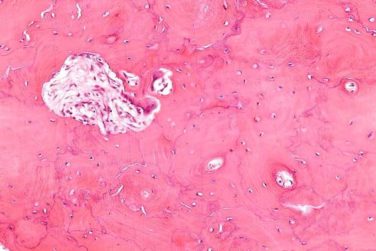AT THE EULAR 2015 CONGRESS
ROME (FRONTLINE MEDICAL NEWS) – Strategies that combine conventional synthetic disease-modifying antirheumatic drugs, such as methotrexate, sulfasalazine, or leflunomide, with a tapered glucocorticoid regimen to rapidly induce remission in early rheumatoid arthritis resulted in remission rates of 60% or higher after 1 year in a Belgian study.
“There is ample evidence that combination therapy for early rheumatoid arthritis (COBRA)-like remission-induction are both clinically and cost-effective, but unfortunately this type of therapy is not yet widely used in practice,” said lead study author Patrick Verschueren, a rheumatologist at the University Hospital in Leuven, Belgium, and professor at KU Leuven. The typical arguments that rheumatologists use against the strategy are that the dosages of prednisone used are unnecessarily high and that the combinations of disease-modifying antirheumatic drugs (DMARDs) are not ideal in terms of efficacy and safety, he said.
“We wanted to resolve the discussion about the ideal remission-induction regimen based on combinations of [conventional] synthetic DMARDs and glucocorticoids. We think this could lead to a wider use of COBRA-like strategies in daily practice.”
Dr. Verschueren presented some of the results of the CareRA [Care in early RA] study to support this view at the European Congress of Rheumatology. In this 2-year, prospective, multicenter, randomized, controlled trial, different intensive combination treatment strategies were compared over the course of 52 weeks in patients with previously untreated, early RA (<1 year).
Of 400 patients who were screened for entry into the trial, 379 were finally recruited and stratified into high- and low-risk groups based on the presence of the classic prognostic markers of joint erosions, rheumatoid factor, and anticitrullinated protein antibody status, and disease activity according to 28-joint disease activity score based on C-reactive protein (DAS28-CRP). In total, there were 289 patients classified as being at high risk and 90 patients classified as having low risk.
Dr. Verschueren reported on the 289 patients who were classified as being at high risk. These patients were randomized to one of three treatment strategies:
• COBRA Classic – methotrexate, sulfasalazine, and 60 mg of prednisone tapered weekly, starting at week 7, to 7.5 mg daily.
• COBRA Slim – methotrexate plus 30 mg of prednisone tapered, starting at week 6, to 5 mg daily.
• COBRA Avant-Garde – methotrexate, leflunomide, and 30 mg of prednisone tapered, starting at week 6, to 5 mg daily.
There were 98 patients in each of the first two treatment arms and 93 in the third. Glucocorticoids were tapered in all patients starting at week 28 and stopped at week 34. From week 40 onward, investigators aimed for DMARD monotherapy.
Remission rates, defined as achieving a DAS28-CRP score of less than 3.2, were 64.3%, 60.2%, and 62.8% of patients in the COBRA-Classic, Slim, and Avant-Garde groups, respectively (P = .840). Other efficacy outcomes, which included the percentage of patients achieving a good EULAR (European League Against Rheumatism) response and a clinically meaningful (score of zero) response using the Health Assessment Questionnaire, did not differ between groups. Changes in radiographic progression between the groups – measured using the Sharp van der Heijde (SvH) score – were also minimal. SvH scores were 1.3 ± 2.1, 1.3 ± 2.5, and 1.0 ± 1.4 at baseline, and these changed over 52 weeks by 0.3 ± 0.5, 0.4 ± 1.1, and 0.3 ± 0.6 in the Classic, Slim, and Avant-Garde groups (P = .581).
At the current time, the COBRA Slim regimen, which consists of methotrexate and tapered prednisone, could be regarded as the ideal remission-induction regimen for all early RA patients, regardless of their prognostic profile, Dr. Verschueren suggested. It had similar efficacy, but fewer adverse events, than did the more complex COBRA strategies, which used higher dosages of glucocorticoids and combinations of DMARDs and with clear advantages over the traditional step-up approach, he said.
There were similar percentages of patients in each of the three groups that experienced at least one adverse event, at 67.3% for the COBRA Classic strategy, 66.3% for the COBRA Slim regimen, and 76.3% for the COBRA Avant-Garde approach. “Certain patients might benefit from DMARD combinations plus step-down glucocorticoids if they can tolerate the treatment schedule and comply with it,” Dr. Verschueren proposed.
“We were surprised that the results of COBRA Slim were so good,” he said in an interview, adding that “there are certainly patients who would benefit more from the DMARD combination schemes, but unfortunately we have no biomarkers to identify these, and a ‘light’ version of the remission-induction scheme seems to have a better risk-benefit balance.”
Until better biomarkers are available, he said, “COBRA Slim seems an ideal one-size-fits-all option for initial treatment of all patients with early RA, provided they are tightly followed afterward and a treat-to-target approach is applied.”
Data on the 90 low-risk patients were presented separately in a poster at the meeting . Patients in this arm included 43 patients who were randomized to receive methotrexate following a tight “step-up” glucocorticoid regimen and 47 patients who were randomized to the COBRA Slim schedule. Results showed that high remission rates were achieved with both regimens, but that the remission-induction achieved with the COBRA Slim strategy was associated with more rapid and sustained disease control. The safety of the two regimens was again comparable.
Dr. Verschueren holds the Pfizer Chair for Early Rheumatoid Arthritis Management at the KU Leuven. The study was conducted in partnership with various rheumatology centers in Flanders (Belgium) and benefited from the support of a Flemish governmental grant provided by the IWT (Innovatie door Wetenschapen Technologie).
rhnews@frontlinemedcom.com



